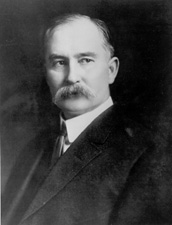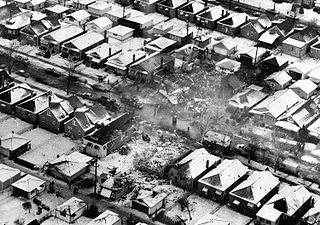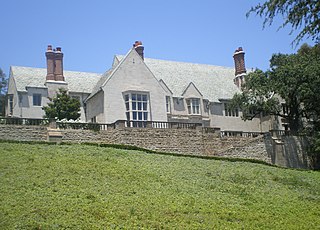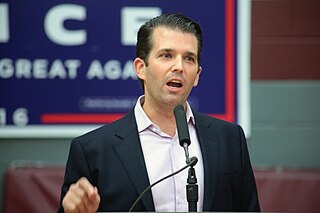
Martin Scorsese, photo courtesy of Wikimedia Commons
What's inspiring me to write is the upcoming release of Martin Scorsese's new film, The Irishman, in theatres on November 1 and on Netflix starting November 27. This movie is based on the book I Heard You Paint Houses by Charles Brandt. I received this book as a gift from one of my best friends and found it quite fascinating. It details five years of interviews, intertwined with Brandt's historical context and perspective, that the author did with Frank Sheeran. Sheeran was a labor union official in the International Brotherhood of Teamsters (IBT) whose close friend and mentor was the infamous president of the Teamsters, Jimmy Hoffa. But prior to meeting Hoffa, Sheeran's close friend and mentor was Russell Bufalino, the Mafia boss of Northeastern Pennsylvania. During the interviews, Sheeran admitted that he would "paint houses" for both Bufalino and Hoffa, which was their code for murdering someone. But the biggest revelation Sheeran made in the interviews is that of the more than twenty-five hits he did for the Mob and for Hoffa, the one that haunted him most to confess to was that he murdered Jimmy Hoffa on July 30, 1975.

Jimmy Hoffa, photo courtesy of Wikimedia Commons
Scorsese is one of my favorite directors and I'm looking forward to seeing this movie because my hope is that returning to the familiar milieu of mobsters inspired Scorsese to return to the great filmmaking of Goodfellas and Casino. I'm also looking forward to seeing him reunite with Joe Pesci, Harvey Keitel and Robert DeNiro, who will be playing Frank Sheeran. Yet another reason I can't wait to see this movie is that this is the first time Scorsese will be working with Al Pacino, who will be playing Jimmy Hoffa. But the most compelling reason I have for seeing this movie is to see if Scorsese and screenwriter Steven Zaillian include what I consider to be the most explosive detail of the book: that Jimmy Hoffa was murdered by the Mafia to cover up their involvement in the assassination of President John F. Kennedy.

President John F. Kennedy, photo courtesy of Wikimedia Commons
I've written many blog entries on the JFK assassination and have tried to be consistent in placing responsibility for his murder on the Military-Industrial Complex. But I've also tried to detail how the CIA and the Mafia were used as tools to achieve this ignominious result. In my blog post, "It's Alright, Ma (I'm Only Acting)," I explained where I thought the role of the Mob fit in:
"A good way to explain this is to say it occurs at a "low level", as the Jim Garrison character played by Kevin Costner in the movie JFK described the level the Mafia operated at in the conspiracy to assassinate President Kennedy:
Jim Garrison: I don't doubt their involvement, Bill, but at a low level. Could the mob change the parade route? Or eliminate the protection for the President? Could the mob send Oswald to Russia and get him back? Could the mob get the FBI, the CIA, and the Dallas Police to make a mess of the investigation? I mean, could the mob get the Warren Commission appointed to cover it up? Could the mob wreck the autopsy? Could the mob influence the national media to go to sleep? And since when has the mob used anything but .38s for hits up close? The mob wouldn't have the guts or the power for something of this magnitude. Assassins need payrolls, schedules, times, orders. This was a military style ambush from star to finish. A coup d'etat with Lyndon Johnson waiting in the wings. "
The author of I Heard You Paint Houses, Charles Brandt, doesn't really delve into the "levels" of the JFK assassination, probably because the focus of his book is a Mafia hit man, Frank Sheeran. Sheeran's perspective is limited to his personal experience. But because his experience includes personal friendships and business relationships with Russell Bufalino and Jimmy Hoffa, it gives the reader an extraordinary story on what events lead up to Hoffa's disappearance. Hoffa was released from prison in 1971, having served four years of a thirteen year sentence for bribery, jury tampering and fraud, when President Nixon commuted his sentence on the condition Hoffa refrain from union activity until 1980. There were rumors that the Nixon administration was bribed to pardon Hoffa in exchange for an endorsement by the IBT to re-elect Nixon in 1972. Sheeran admitted in his interviews with Brandt of at least two separate occasions, in May 1971 and October 1973, where he delivered a suitcase filled with at least six-figures worth of cash to none other than Attorney General John Mitchell.

Attorney General John Mitchell, photo courtesy of Wikimedia Commons
Hoffa sued to invalidate this restriction from union activities on his pardon in court, but lost in 1974. By 1975, Hoffa was not only appealing this case at the next judicial level, he was making noise that he wanted to run for President of the IBT in 1976. As part of his campaign to depose the current Teamsters president, Frank "Fitz" Fitzsimmons, Hoffa said publicly that he was going to expose the alleged mob connections that Fitz had. This was upsetting to mobsters like Anthony "Tony Pro" Provenzano that had been affiliated with the Teamsters prior to Hoffa's prison term. Sheeran tried explaining to Bufalino, who was much higher up the Mafia food chain than Tony Pro, that Hoffa was "puffing"; letting off steam but not really going to expose anyone. But Russell Bufalino knew too many important people who were worried about Hoffa's behavior and insisted on meeting with him at a bar in Philadelphia called Broadway Eddie's on October 17, 1974. Frank Sheeran gave his perspective on what happened that night.
From I Heard You Paint Houses, pages 239-242:
There were about sixty people at Broadway Eddie's that night. The only ones who were at a table eating were Angelo, Russell, Jimmy, and me. The rest were at the bar. Trays of food kept coming out of the kitchen for the people at the bar. Jimmy was having spaghetti and meatballs, and I was having raviolis. The four of us were sitting in a row. When you wanted to talk you had to lean out a little bit. Angelo was on the end next to Russell, and Jimmy was between Russell and me.
Angelo didn't say anything and I didn't say anything the whole time. They knew I was for Hoffa. I had Hoffa stickers all over my Lincoln. There was no prolonged conversation about what they were there for. I would imagine Jimmy knew why he was asked to be there, but I don't know.
"What do you want to run for?" Russell asked.
"It's my union," Jimmy said.
"You only have four years to wait. You could run in eighty. That would make sense."
"I could run now. I've got the people with me."
Jimmy wasn't being fresh, but he was being firm. Russell didn't say anything about the way Jimmy was campaigning and the things Jimmy was going around saying about the alleged mob. But Jimmy had to know that such talk in public would be of concern to Russell. Jimmy knew about Joe Colombo and the publicity he brought and Crazy Joey Gallo. Jimmy knew how all of Russell's problems began with the publicity from Apalachin. At least Jimmy should have been wondering what was causing Russell to go from being behind Jimmy and meeting with Fat Tony to help Jimmy in 1976, and now talking this way about things.
"What are you running for?" Russell said. "You don't need the money."
"It's not about the money," Jimmy said. "I'm not letting Fitz have the union."
Russell didn't say anything for a minute. He just ate in silence. People didn't say no to Russell and he usually never had to ask twice.
Jimmy said, "I'm going to take care of the people who've been fucking me."
Russell turned to Jimmy and was now facing Jimmy and me both. "There are people higher up than me that feel that you are demonstrating a failure to show appreciation," and then he said so softly that I had to read his lips, "for Dallas."
Jimmy did not respond to that.
Russell turned away and made some small talk with Angelo and that meant the meeting was over. We finished eating. I sat there thinking that this was it. The people had talked among themselves and Russell was now speaking for them, and they were against Jimmy running and Russell was, too. Tony Pro had won the battle for their hearts and minds. I had the feeling that it wasn't that Jimmy was running that was costing his support among his friends; it was the way he was running.
I didn't know how serious it was for Jimmy until Jimmy and I were getting ready to leave. Russell took me aside and said, "Some people have a serious problem with your friend. Talk to your friend. Tell him what it is."
"I'll do my best. You know yourself, Russ; he's tough to talk to."
"He's got no choice."
"Jimmy's pretty high up himself," I said.
"You're dreaming, my friend. If they could take out the president, they could take out the president of the Teamsters."
Jimmy liked the Warwick Hotel. It was around Seventeenth and Walnut, a short ride from Broadway Eddie's in my Lincoln with the Hoffa stickers. I went up to Jimmy's room with him to have that talk with him, but Jimmy started talking first.
"Everybody wants Hoffa to back down. They're all afraid of what I know. I got a package here I want you to take down to the Market Inn." Jimmy handed me a small satchel, not too heavy. It had no name on it. Whoever it was for would know enough to come for it.
"That reminds me, Jimmy," I said. "I've been meaning to tell you this before; Mitchell stopped down the hall last spring and told me to tell you not to run. He said to enjoy your pension and your grandchildren."
"That doesn't surprise me. That fucking Mitchell already told me, 'Don't even think about using what you think you know.'"
"I didn't know what Russell was going to say to you tonight, Jimmy," I said. "But I know they mean it, Jimmy. On the way out tonight Russell told me to tell you what it is."
"If anything unnatural happens to Hoffa, I can tell you all hell with break loose. I've got more records and lists ready to be mailed out to the media than you can imagine. I've had too many motherfuckers in my life I thought I could trust. I need more people like you. And I have them now. I know who my friends are."
"Jimmy, you're doing a lot of puffing that has people concerned."
"That's just the tip of the iceberg, the tip of the iceberg. Let me tell you - Dallas, did you hear that word tonight? Remember that package you took to Baltimore? I didn't know it then, but it turns out it was high-powered rifles for the Kennedy hit in Dallas. The stupid bastards lost their own rifles in the trunk of a Thunderbird that crashed when their driver got drunk. That pilot for Carlos was involved in delivering the replacements that you brought down. Those fuckers used both of us on that deal. We were patsies. What do you think of that? They had fake cops and real cops involved in it. Jack Ruby's cops were supposed to take care of Oswald, but Ruby bungled it. That's why he had to go in and finish the job on Oswald. If he didn't take care of Oswald, what do you think they would have done to him - put Ruby on a meat hook. Don't kid yourself. Santo and Carlos and Giancana and some of their element, they were all in on Kennedy. Every single one of the same cast of characters that were in on the Bay of Pigs. They even had a plot to kill Castro with Momo and Roselli. I've got enough to hang everybody. And every last bit of it comes out if anything unnatural happens to me. They will all pay. All those who fucked me will pay."
I sat there with the satchel in my lap. Jimmy would sometimes get on a kick and there was no stopping him. You just listened. But I never saw him like this before. This time it was unreal. There was nothing for me to say even if I was inclined to do any talking. If the room was bugged I didn't want my voice on anything. Picking up high-powered rifles - man, oh, man.
"You don't know the half of it. Fitz's stupidity is only exceeded by his arrogance. They thought Hoffa was going to drop off the face of the earth. None of them have got an ounce of balls to face me. My Irish friend, there are things I can't tell you because it would cost you your life to know them. There are secret things I have known, seen, and supported that would rock this nation."
According to Frank Sheeran, this is what sealed Jimmy Hoffa's fate. Nine months later, Hoffa disappeared forever. I'll leave out Frank's details on how Hoffa was murdered; either read the book or watch the movie when it comes out. What I want to address is that there are certain details in this account, because of significant prior research I have done on the JFK assassination, that strike me as being highly credible. Hoffa's rant in the hotel room with Sheeran dovetails with a number of other details confirmed within the JFK assassination research community, such as the involvement of Santo Trafficante, Carlos Marcello and Sam Giancana, the Mafia connection with Jack Ruby, and the overlap between the characters who orchestrated the hit on JFK also orchestrating the Bay of Pigs. Hoffa's mention of Sam "Momo" Giancana and Johnny Roselli teaming up with the CIA to whack Castro has pretty much been accepted by the mainstream. I suppose a Warren Commission apologist could dismiss this account, which Sheeran divulged to Brandt in 1999, as an imaginative retelling of conspiracy theories well known by the public at that time. But there's one detail not so well known that sticks out like a crawling cockroach on a white rug:
The stupid bastards lost their own rifles in the trunk of a Thunderbird that crashed when their driver got drunk.
When I first read this passage, it made the hairs on the back of my neck stand up. A Thunderbird with rifles in the trunk? It sounds like a throwaway line, but it reeked of familiarity to me. Where had I read about this before? I searched through my library and found the answer. Oswald Talked: The New Evidence in the JFK Assassination, an obscure book written by Ray and Mary La Fontaine in 1996, had a unique perspective in that their evidence originated from assassination files released in Dallas in 1992 in the wake of the furor surrounding Oliver Stone's film JFK. They obtained arrest records from the Dallas Police Department that had previously been classified. In the course of their research, they discovered the arrest records for the "three tramps." The identities of the "three tramps" have long been the subject of debate in the JFK assassination research community as possibly being hit men like Charles Harrelson, perhaps even Watergate felons Frank Sturgis and E. Howard Hunt, disguised as hobos. The La Fontaines verified the identities of the three tramps arrested were Gus Abrams, Harold Doyle, and John Forrester Gedney.

The Three Tramps, photo courtesy of Wikimedia Commons
So why did the authorities cover up the identities of these seemingly innocuous people for so long? Perhaps because there was a fourth arrest that day in Dallas, one John Franklin Elrod, who tried to inform the FBI in August of 1964 that he shared a cell with Lee Harvey Oswald on November 22, 1963. The FBI tried to discredit Elrod by denying he was incarcerated in Dallas that day and burying his report for three decades. What did Elrod inform the FBI about concerning Oswald?
From Oswald Talked, page 16:
Elrod informed the deputies on that August morning that what he hadn't been able to get out of his head were some remarks his Dallas cellmate had made shortly after they were locked in together. A man with a gruesomely battered face had been led through the corridor outside their cell. He was an inmate with an escort of guards. Elrod heard his cellmate say he recognized the injured inmate despite his "smashed up" face. He had met him previously in a motel room with four other men, he said. The men in the room had been advanced money under some type of contract, and the man with the injured face received some of the money. He wasn't injured then and drove a car loaded with guns, a Thunderbird. That was what Elrod could remember his cellmate saying, except for the most important thing: that one of the men in the motel room had been Jack Ruby.
The La Fontaines were able to verify that Lawrence Reginald Miller was the passenger of a 1962 Thunderbird who smashed his face into the windshield when the car crashed after being chased by the Dallas Police Department who staked out the illegal gunrunning. After being treated at Parkland Hospital on November 18, 1963, Miller was remanded to the Dallas city jail, where he stayed until November 25. The driver of the Thunderbird, Donnell Darius Whitter, who ended up with a four year prison sentence for his crimes, worked at a Texaco Service Station where he would service the car of Jack Ruby whenever he came into the station.
I sincerely doubt any of these inconvenient details will make their way into The Irishman. When I finished reading the book, I worried that Scorsese might try to sidestep the JFK aspects of the story and just focus on the gangster details. It remains to be seen exactly what will be included, but this portion of Owen Gleiberman's review of the movie gives me hope it might be more than I expect:
The film presents the JFK assassination as an underworld conspiracy, and whether or not you buy that, the triangle of the mob, the Teamsters, and the JFK administration, with the former bootlegger Joe Kennedy called upon to repay favors, makes for a thrillingly entangled political spider web.
...
It would be a stretch to call “The Irishman” topical, yet in its way the film could hardly be more timely. It’s a vision of outrageous power flying too close to the sun. And when Pesci’s terse, demonically understated Bufalino, behind his death-shield horn-rims, tells Frank that the order has come down from on high, the movie gives off a resonating chill.
What exactly did Bufalino mean by "people higher up than me" or in Gleiberman's words, "the order has come down from on high"? Trafficante, Marcello and Giancana (who was murdered one month prior to Hoffa's disappearance and five days prior to his scheduled testimony to the Church Committee on the mob's role in a CIA plot to kill Castro) were not higher up the Mafia hierarchy than Bufalino; they were equals. I really believe this is a reference to the realm of Deep Politics and the intersection of organized crime and intelligence black ops. I used to call it the Deep State, in reference to Peter Dale Scott's concept of it, but I can't anymore. I can't even stomach including those words on my page header anymore. Perhaps part of what has depressed my desire to blog has been witnessing how the far right has expropriated the phrase and perverted its original meaning. Just walk into your local Barnes and Noble store and check out their current events shelves to see what I mean: dozens of books with the words 'deep state' plastered on the covers from the likes of Sebastian Gorka and Newt Gingrich, as if they were completely separate and disconnected from it. Besides, it is a global phenomenon involving multiple state actors, so Deep World is a more appropriate description. But I won't use that either out of fear that phrase will also be expropriated for right-wing trendiness. I'll use Michael Ruppert's phrase GlobalCorp because it acknowledges how their endgame is unsustainable in the context of the Carbon Crisis:
The problem lies in the definition of "The Powers That Be." Most people still think in terms of nation states. I always think in terms of money, even to the point of looking at money (the way it functions now) as the PTB without attachment to a human or national identity.
Not too long ago I had a dialogue with Catherine Austin Fitts after which an epiphany struck. As the human race blows itself into extinction, or destroys the climate, or starves itself to death, the last corporate merger and acquisition will take place. And at the same moment as mankind dies, the CFO of "GlobalCorp" will be shouting, "Hooray! We did it!"
Those who win in a rigged game get stupid. We have all played this game (to one degree or another). And compared to the rational, far-sighted humanitarians that Jefferson and Whitman hoped for and expected, we are all frightfully stupid.
If you see me blogging again, and I'll never say never where blogging is concerned, it is because I have found the inspiration to fight the stupid!









 Pacific Electric "Red Cars" lined up for destruction Image courtesy of
Pacific Electric "Red Cars" lined up for destruction Image courtesy of